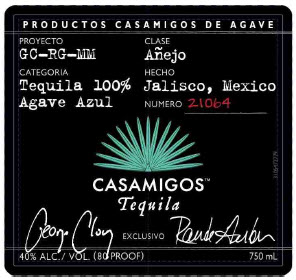- A collection of recent TTB label approvals, for absinthe
- swissinfo.ch explains the recent US changes; article by Marie-Christine Bonzom.
- TTB sets forth position on absinthe.
- Label approval for Kubler Absinthe. This is the first authentic Swiss Absinthe allowed in the US in more than 95 years; it is from the birthplace of absinthe (Val-de-Travers, Switzerland), and it was the first authentic absinthe (with Artemisia Absinthium, fennel, anise, and thujone) to obtain TTB formula approval.
- Reuters and The Washington Post explain the recent changes.
News
Absinthe is Flowing Again (Legally!)
Absinthe is Flowing Again (Legally!)
In mid-2007, TTB began allowing absinthe to flow again, after absinthe had been banned in much of the world for almost 100 years. First there was a trickle of absinthe back into the US (Kubler and Lucid) and then there was a stream (with about six brands allowed as of one year later).
-
The Virtual Absinthe Museum explains what happened, and the role we are proud to have played in this matter from 2003-2008. (Archive of this now-defunct link: www.oxygenee.com/absinthe-america/legalization.html.)
-
TTB sets forth position on absinthe.
- Reuters and The Washington Post explain the recent changes.
- Two great sources for the latest news on absinthe: The Wormwood Society, Fee Verte.
Let us know if you hear of other brands approved for US sale, or on the way. It will be fun to watch and see whether the stream grows into a river, or dries up over the next hundred years.
Absinthe, a collection of TTB label approvals
(Date of first formula approval; date of first label approval)
- Kubler, Superieure
(Formula 3/2004; Label 5/2007) - St. George, Verte
(Formula 6/2007; Label 12/2007) - Lucid, Superieure
(Formula 10/2006; Label 3/2007) - Grande Absente, Originale
(Formula 11/2007; Label 2/2008) - Le Tourment Vert, Francaise
(Formula 8/2007; Label 1/2008) - La Fee, Parisienne
(Formula 1/2008; Label 3/2008) - Mythe, Traditional
(Formula 10/2007; Label 2/2008) - Sirène, Verte and Sirène, Blanche
(Same formula, both products; no date specified); Labels 4/2008) - Libertine, Superieure
(Formula 8/2007; Label 2/2008) - Leopold Bros., Verte
(Formula: no date specified; Label 5/2008) - Mata Hari, Bohemian
(Formula 3/2008; Label 4/2008) - La Clandestine, Superieure
(Formula 2/2008; Label 6/2008) - Van Gogh, Klasiek
(Formula 3/2008; Label 6/2008) - Artemisia, Superior Verte
(Formula: no date specified; Label 5/2008) - Trillium, no fanciful name specified
(Formula: no date specified; Label 6/2008) - La Muse Verte, Traditionelle
(Formula 3/2008; Label 5/2008) - Marteau, de la Belle Epoque
(Formula: no date specified; Label 7/2008) - Mansinthe, by Marilyn Manson
(Formula 6/2008; Label 8/2008) - Emile Pernot, Vieux Pontarlier
(Formula 6/2008; Label 8/2008) - Obsello, Verte
(Formula 5/2008; Label 7/2008) - Duplais, Verte
(Formula 3/2008; Label 7/2008)
Updated 4/08
Caffeinated Alcohol Beverages
First it was plain old Maxwell House. Then it was Red Bull. Now it’s in a liquor store near you. It’s caffeine – in everything from beer to vodka. There is a fast-moving trend toward more caffeine in more alcohol beverages; we have assembled a collection of recent approvals here.
Allergen Labeling
Allergen Labeling. The age-old wine label is getting more complicated by the year what with Organics, Meritage, Import Certification — and the new allergen labeling requirements.
Allergen Labeling is on the way – On July 26, 2006, TTB began allowing allergen information on labels for beer, wine and spirits. For now and the next several months at least, allergen labeling is voluntary. But if you elect to make any reference to any of the eight “major food allergens,” you would need to comply with the interim rule, and you would probably need to get a new label approval. The “major food allergens” are: milk, egg, fish, shellfish, tree nuts, wheat, peanuts, soybeans, and their proteins. The interim rule does not seem to have any special treatment if producer is very small, or if the amount of the allergen is very small. By way of example, many wines contain fish proteins as a fining agent. The bottler is not required to say anything about these proteins under current rules, but if the bottler elects to say anything about allergens, the bottler would need to list every allergen in the wine, as CONTAINS: FISH. This could be on any label (front, back, side, neck). By the same token, if you describe your product as WHEAT BEER rather than BEER, you would probably need to get a new label approval and declare CONTAINS: WHEAT on the label.
- Interim rule. Effective July 26, 2006. This is largely voluntary.
- Notice of Proposed Rulemaking. This would take something close to the interim rule and remove the voluntary aspect. It is likely to take months or years before it becomes final, even though there is little organized opposition.
- See an overview of the new requirements prepared by an experienced colleague.
- Let us know when you see examples of new labels, with allergen declarations, and we will post some examples here.
Import Certification
Beginning in August of 2005, many imported wines will need a new certification to show that the wine complies with the law in the country where produced. Wines from Argentina, Australia, Canada, Chile, and New Zealand are exempt.
- The August 24, 2005 temporary rule and sample form.
- FAQ on Wine Certifications, prepared by TTB.
- The US and EU Reach an Agreement on Trade in Wine. This agreement, announced September 15, 2005, is likely to substantially scale back the need for import certifications.
Low Carbs
TTB allows low carbohydrate claims in advertising and labeling, for beer, wine and spirits.

